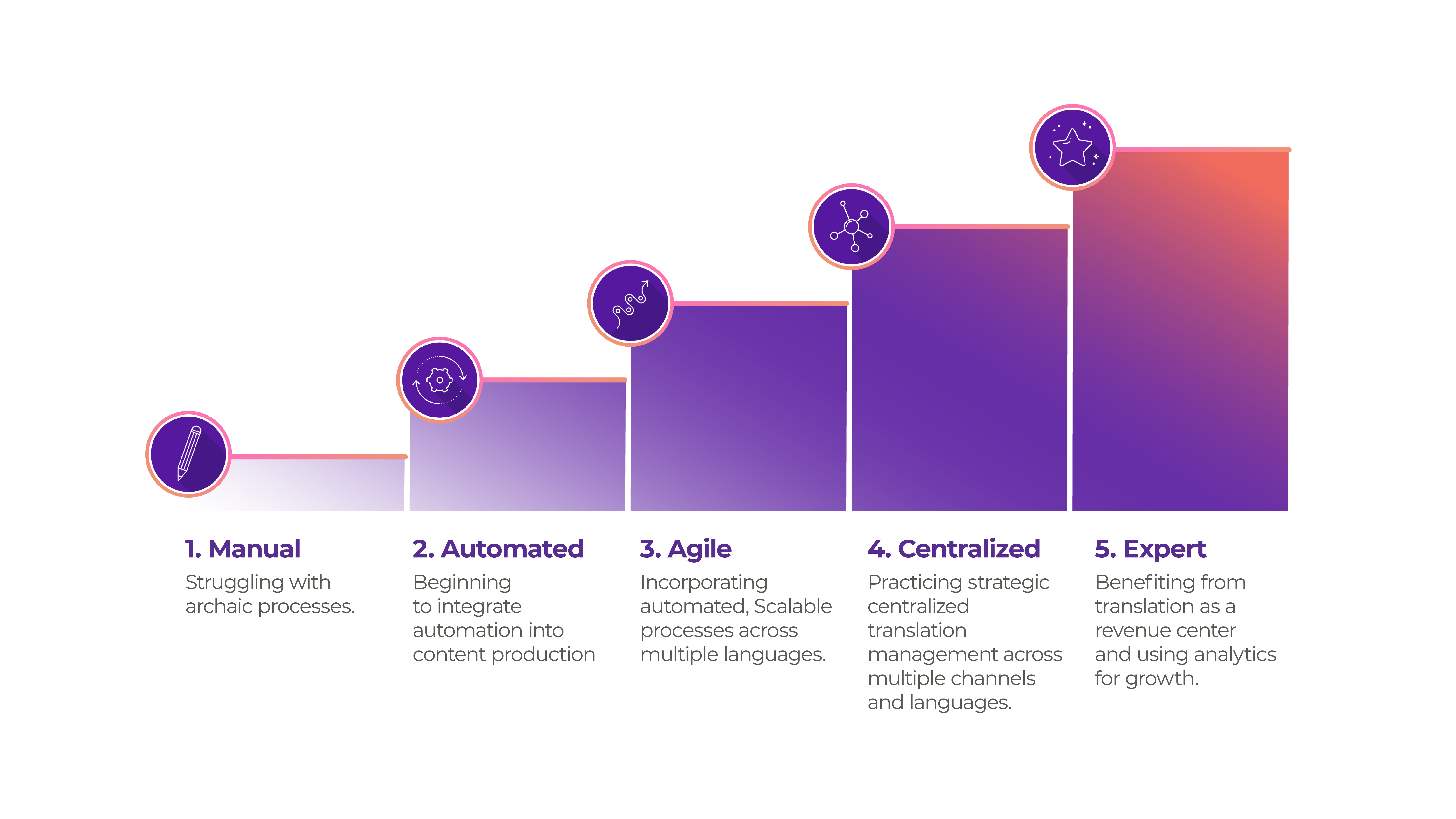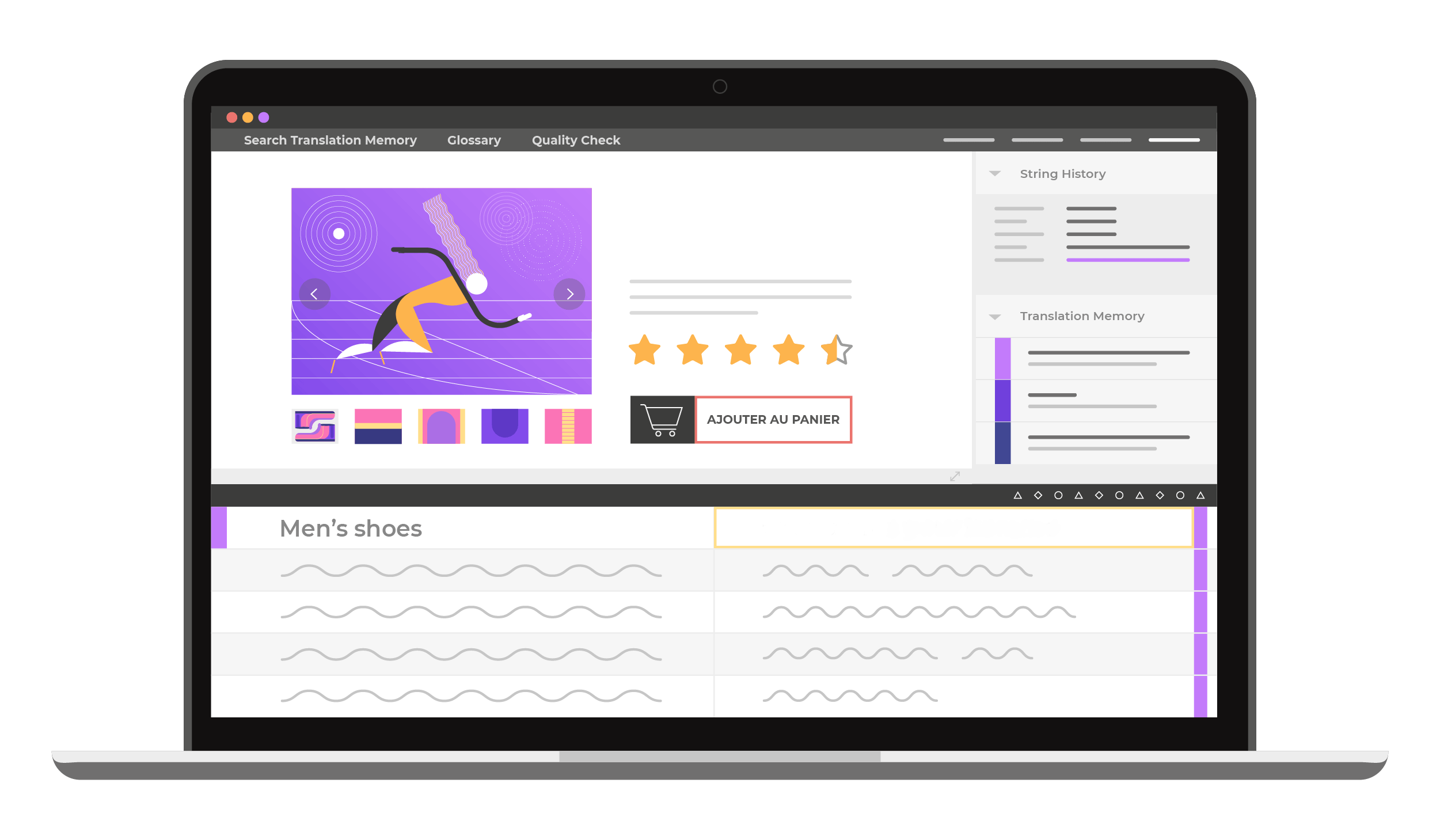Matt Grech
Content Marketing ManagerSmartling
We've spoken with countless brands about how they value translation and localization within their company. While all consider translation a necessity at this point, it has become clear that -- just like quality -- that exact importance and value of translation is subjective.
Some organizations translate to enter markets first, while others translate simply because their customers don't speak English.
Other brands translate because growth is in their DNA. Reaching every last person on Earth and providing an amazing experience to everyone, everywhere, is the end goal.
That sounds like a monumental effort because it is, and translation is how you get there. But, as we know well, translation without the proper technology, strategy, and execution can get complicated fast.
Start small, scale big
Just like with any other initiative, translation is an investment. As we've said before, you'll need to start with the right foundation for success. That means finding the right technology, establishing agile processes, and creating seamless workflows.
It'll be a balancing act between managing localization teams, optimizing your platforms, analyzing data, and establishing brand quality standards.
And also like any other investment, it makes sense to start small. Before you can run you have to walk, and in translation that means laser focusing on a specific campaign. For brands already translating content into one or two languages, you're off to a good start.
Focus on a specific market you see an opportunity to target, for example, if there's an existing demand from users in that region, or a clear gap in your competition's support to establish a strong foothold in translation.
Thinking About Translation
You'll need to do some groundwork before jumping into translation, and when you're entering a new market with your solution, there's a lot of individual elements that need to be considered:
How do you know which markets are worth the investment?
This is where research and data will be critical. You can analyze data, like website traffic, to understand where your users are coming from or which offerings are most popular in different regions.
But you could also collaborate with translators. As your cultural experts, brands should engage translators early in the planning process to better understand the language and audience needs or wants, and to deliver the highest qualtiy content.
How do you manage your content, both native and translated?
With so many moving pieces and stakeholders, managing all of your content in one language can get tricky, let alone doubling that every time you add a new language.
How will you manage translators?
From providing feedback and assigning jobs to handling payment, translators are a new part of your team and will require support, guidance, and collaboration to be successful. Speaking of which...
How do you make translators successful?
Translators are a part of your team and should be thought of as integral content creators that help bring your brand's vision to life.
They'll need proper management and support, as well as the right tech and resources. Do you have an updated style guide and glossary, is your Translation Memory up to date?
Take inventory of your existing process with these considerations in mind to gain a stronger understanding of exactly where your brand currently fits within the localization maturity model.
The Localization Maturity Model
If you're already translating, then you already fall somewhere within the Localization Maturity Model. And, if you're just getting started, our model is a great template for ensuring a successful localization strategy.

The business value of moving up the ladder is that you’ll be able to do more with less. By automating and centralizing your localization efforts, your team can scale without increasing headcount, and get to market faster.
You'll first want to being by evaluating how your brand makes decisions about adopting new processes and technology. Ensure you align your proposal for upgrading your localization process with the culture.
While challenging, you'll also need to acquire buy-in from stakeholders early-on, and establish the importance of translation internally from the very beginning. From there you can jump into a pilot of 1-2 languages and begin automating to achieve an agile translation engine.
Translation automation will be critical
Translation management is full of manual, repetitive tasks. The entire idea of a TMS came from wanting to defeat the complicated and messy back-and-forth of emailing translated spreadsheets, and copy and pasting your content. That opens up Pandora's box for errors, mismanagement, and low-quality translations.
Managing content and translation is no easy task. Managing content and translation at scale is complicated without the right foundation.

That's why automation will be a massive component of establishing a solid and agile translation process.
You'll need a foundation in place as it relates to integrations to easily move content, provide context, and support your translators.
And automation isn't a trade-off for producing high-quality content: just because you remove the human doesn't mean you can't stay on top of everything. You can automate your entire quality control cycle.
The Cost of Not Translating is Too High
Its crystal clear how important it has become to provide a digital experience accessible globally. Emerging markets are quickly entering the digital world, buying has almost shifted completely online, and we're constantly surrounded by content.
Simply put, if you're not translating your experience, you're missing out on a potential market opportunity. You're missing out on the chance to grow and reach even more users, to build a bigger following and to grow your brand's presence.
And the end of the day, it's about capturing, sensibly, as much market share as you can. It'll take a robust and agile translation engine to get there, as well.









